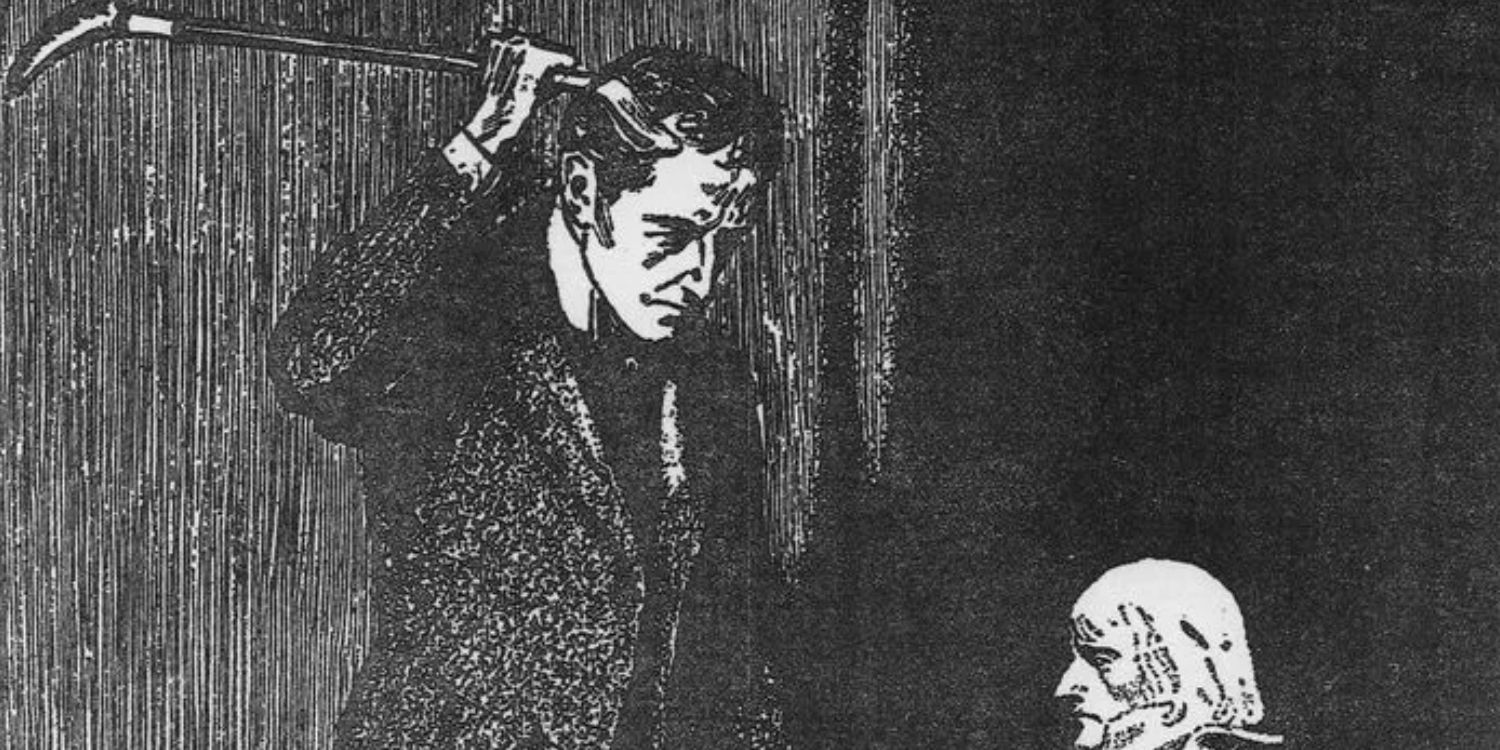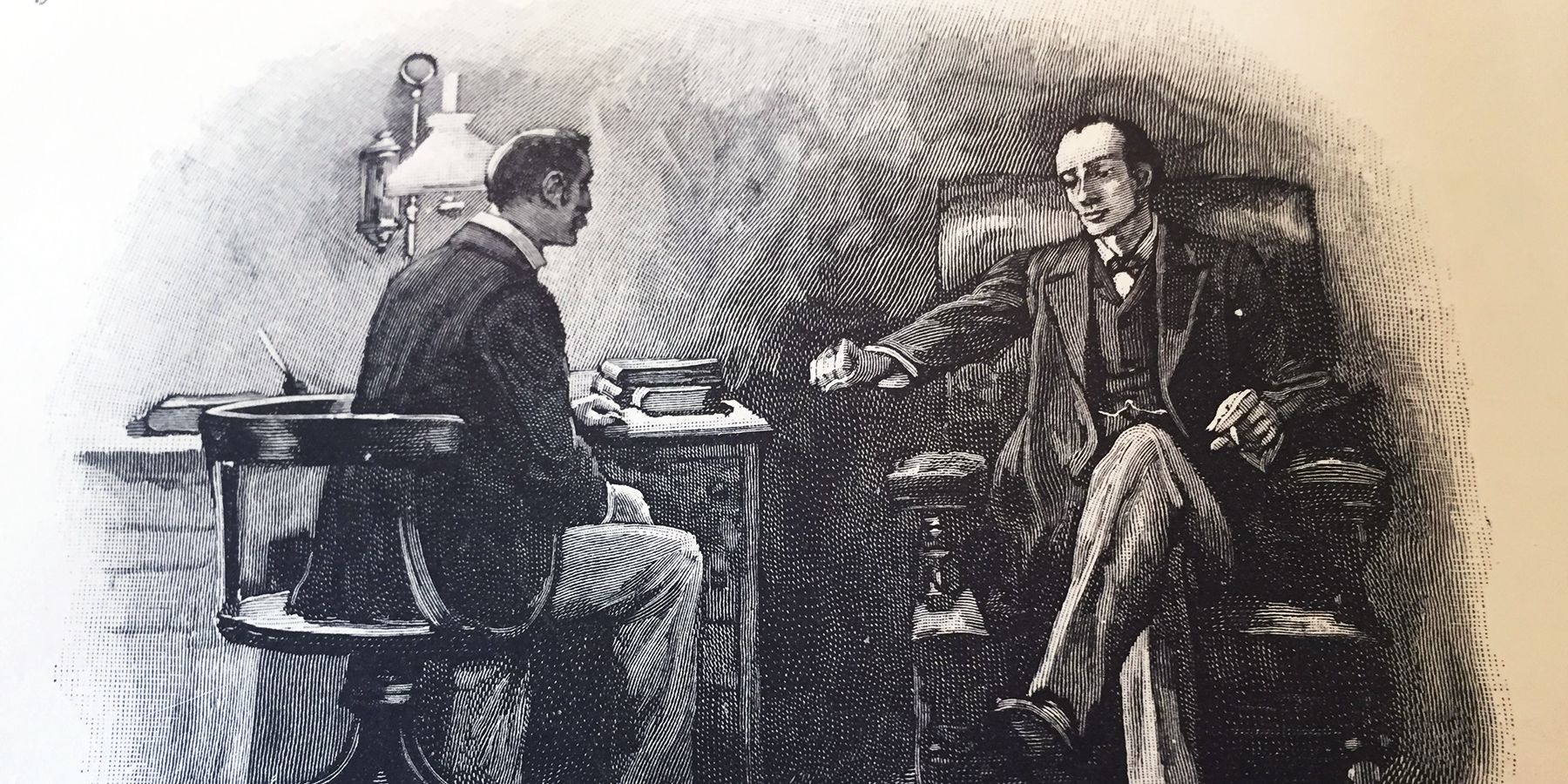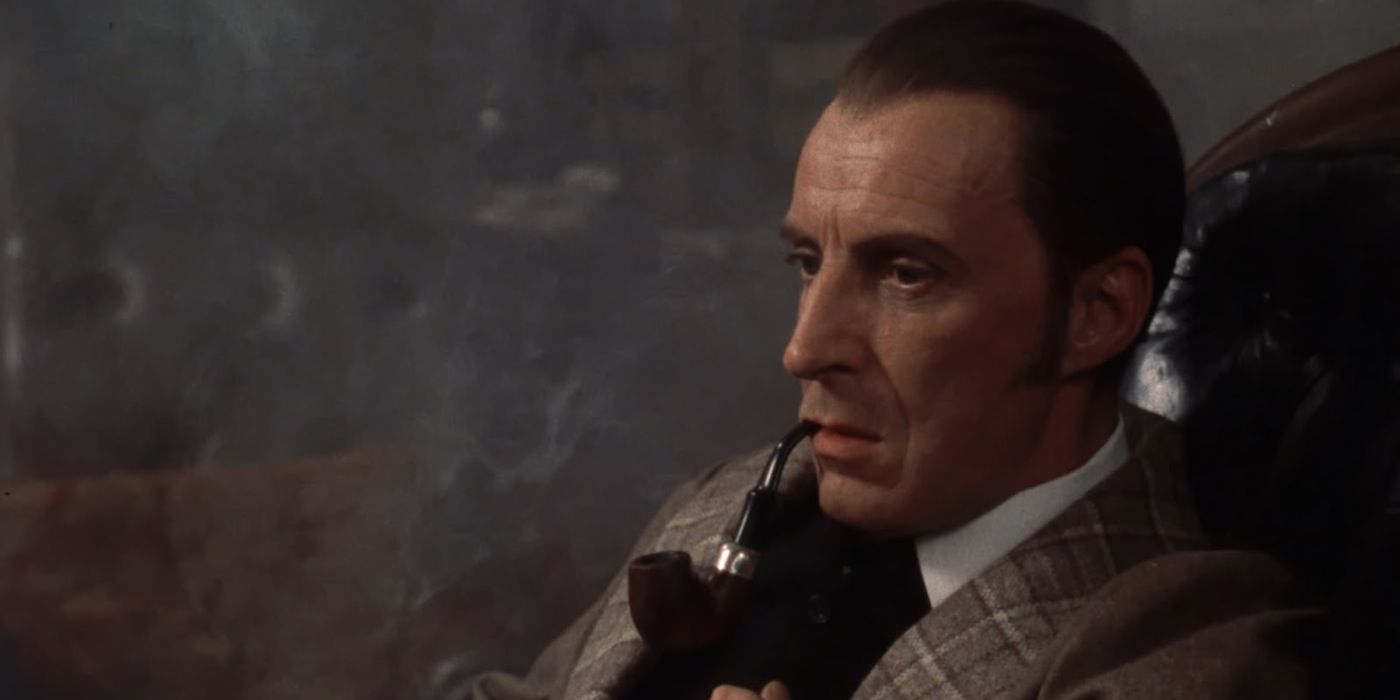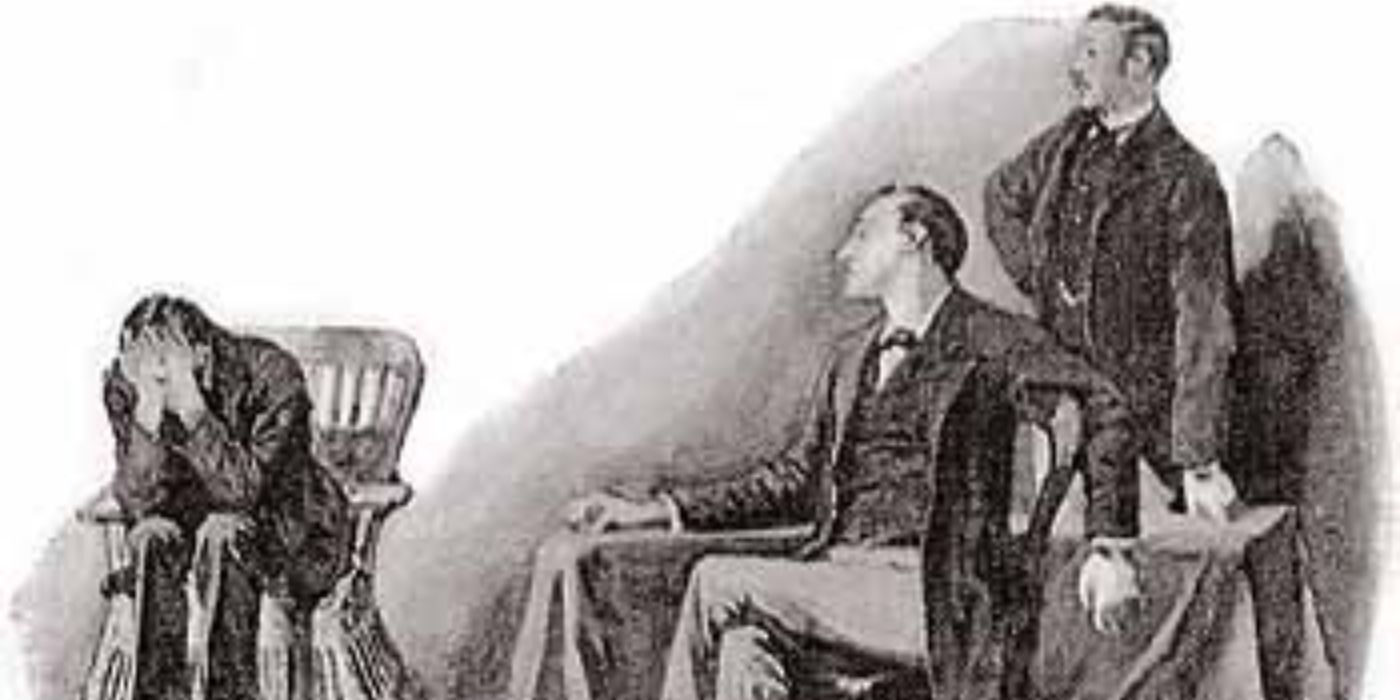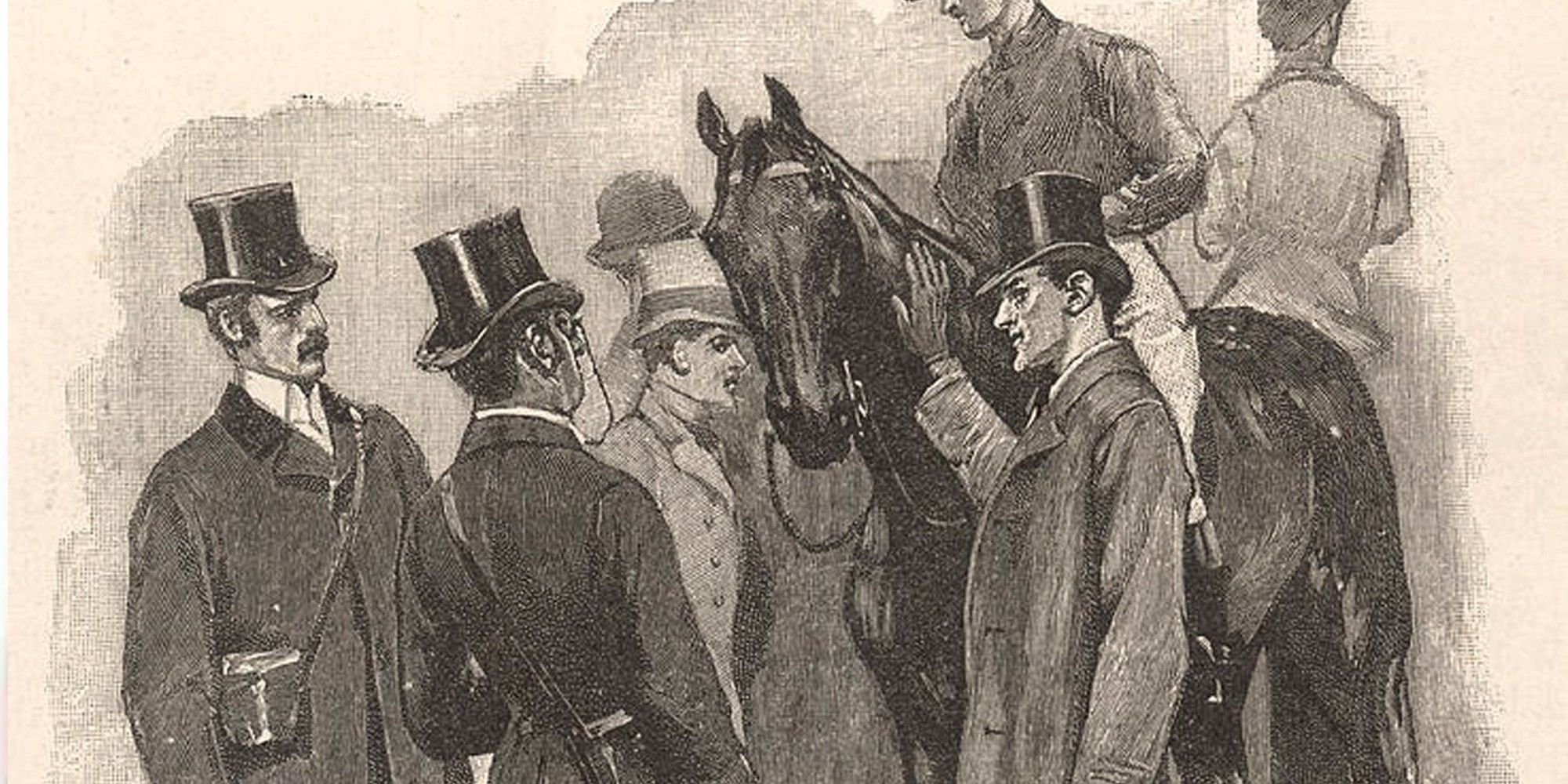
Arthur Conan Doyle is one of the most visionary and prolific writers of all time and the creator of the ever-popular Sherlock Holmes series of stories. ACD began publishing stories about the renowned detective in 1887, when he released his first novel, A Study in Scarlet. Then, in 1891, he began compiling and publishing short stories that revolved around Holmes in The Strand Magazine which ended up having record sales as a result of his collected works appearing regularly in the magazine.
In total, the detective appears in four novels and 56 short stories, in which Holmes begins working on various cases. Holmes uses his remarkable reasoning skills and determination to accurately solve and detect things that most other people cannot observe and understand. His gifted mind and remarkable intelligence make him one of the greatest detectives of all time, but he is also an eccentric figure who has several unpleasant quirks.
15
The Adventure of Bruce-Partington Plans
Among the 60 stories of Sherlock Holmes of the ACD, only a few feature Holme's brother, a man who has important connections with the British nobility. Mycroft Holmes plays a prominent role in The adventure of the Bruce-Partington plansas he takes the case to his brother in hopes of keeping a delicate situation secret, while also recovering stolen documents with important plans.
The story includes some ingenious twists and Sherlock's trademark vision and attention to detail, as he is able to piece together the small clues to form a complete picture of the crime that occurred. The interactions between Sherlock and Mycroft are also very enjoyable. And considering this is Mycroft's penultimate appearance in Sherlock Holmes stories, it becomes even more special.
14
The Adventure of the Six Napoleons
The Adventure of the Six Napoleons is another story that highlights the levity in Holmes stories, since the crime being investigated is, at first glance, quite absurd. Inspector Lestrade, another popular character in Arthur Conan Doyle's Holmes stories, comes to Holmes with an unusual case that he has theories about. However, Holmes bursts Lestrade's bubble by finding the deeper meaning of the crime, which leads him, piece by piece, to the criminal at large.
In London, an unruly looter appears to be destroying busts of Napoleon in several locations. While this is certainly strange, even more unusual is the fact that nothing else is damaged or stolen. However, when a subsequent crush occurs, the gang also finds a dead body, immediately increasing the tension and pressure to solve the case. Fortunately, Holmes is able to use his extraordinary intelligence and cunning fake journalism to persuade the villain and solve the case in advance.
13
The Valley of Fear
The Valley of Fear is the finale of four ACD Sherlock Holmes novels. While the mystery at the heart of the story remains quite simple, at least for this type of story, there is an even more exciting element that runs beneath the surface of the narrative. As Holmes investigates a murder that has links to his rival, Moriarty, he successfully uncovers a plot to kill a former detective who fled America for England.
Holmes does everything he can to save the man and ensure he doesn't meet his end, but Moriarty's wickedness and clever planning mean that he will ultimately succeed in his nefarious plans. The cat and mouse game and Sherlock's relationship with Moriarty make this one of the best stories to connect narratives within a larger set of stories. However, this mostly hints at the big story to come, when Moriarty and Sherlock will finally come to blows.
12
The adventure of the dancing men
One of the most intriguing stories in Sherlock Holmes The collection revolves around a mysterious message that features small dolls performing seemingly random dance moves. The adventures of the dancers is one of only two stories in the series in which Holmes' client is murdered after hiring the renowned detective. Although Holmes manages to solve the case, his fallibility is proven by not having acted quickly enough.
Related
Holmes almost immediately recognizes the code the dancers represent and is able to decipher it and contact the relevant authorities to prove his theories correct. But as he chases the puzzle and tries to set a trap for the criminal, the client is brutally killed. To add to the tragedy of the story, the man responsible for the murder receives a reduced sentence and the widowed wife has suffered enormously after her husband's death. Despite the sad ending, the story presents another side of Holmes, and his flawed nature of love puzzles, rather than his commitment to protecting people.
11
The adventure of the empty house
After ACD supposedly retired the Sherlock Holmes character, he was eventually convinced to bring his most popular creation back from the dead. The adventure of the empty house serves as the story that sees this revival occur. Initially, Dr. Watson is working on a case in the absence of his apparently deceased partner. However, a mysterious figure reveals himself to be Sherlock at an opportune moment and the two are reunited.
Holmes explains that he emerged victorious after his conflict with Moriarty, but spent the intervening years on a long, slow road home while exploring other parts of the world. The story's central mystery revolves around a murder, and Holmes is able to apply his considerable and varied talents to bait the killer and catch him in the middle of another murder attempt. The story sees Holmes back in good form and fills in some important gaps to the overall story.
10
The final problem
The story that immediately precedes The empty house and The final problem, which is one of the most notable short stories to ever feature Detective Holmes, as it was initially written to create an ending to the series. The story presents the great villain, Professor Moriarty, and brings the death of the hero, Holmes, into its narrative. However, Doyle ultimately chose to pick up the pen once again and continue telling stories about his greatest work of all time. This story is so deep and prolific due to the presence of the incredible villain who is now well established in popular media as Sherlock's greatest rival.
In the 2011 film starring Robert Downey Jr. as Sherlock Sherlock Holmes: A Game of Shadowsthe film ends with a scene that replicates Holmes' fate in the tale, falling off the edge of the cliff along with Moriarty. The popular BBC program, Sherlockit also featured an amalgam of stories where Moriarty was present, inspired by Doyle's works, and titled the final episode of the series "The Final Problem" as a tribute, despite the story being very different.
9
The Adventure of the Musgrave Ritual
In general, the Sherlock Holmes stories written by Doyle were all written through the perspective of his dear friend, Dr. John Watson. While this is true of almost all stories, there are a small number that deviate from tradition. The Adventure of the Musgrave Ritual is an example, where Sherlock himself takes the lead in recording and retelling the story.
This story is a shining example of Holmes's exceptional skills in deduction and problem solving. When presented with an ancient and mysterious poem, Holmes is able to delve deeper into the source material and gain insights into the meaning and solve a centuries-old mystery. The story is full of intrigue and mystery, until Holmes sets the record straight and clear in his typical way.
8
A Study in Scarlet
The first story about Sherlock Holmes appeared in 1887, in a complete novel titled A Study in Scarlet. Doyle only wrote four Holmes novels in total, with most of the other stories detailing his adventures in short story form. However, this first story was already a very complete and clear idea of the character and the world around him that continues to this day.
The relationship between Holmes and his friend Watson is developed within the narrative, along with the introduction of prominent returning characters such as Inspector Lestrade. The story is also the first work of detective fiction to use a magnifying glass in the investigation, which became an idea intrinsically linked to the character Holmes. Finally, it also reveals how and why Watson chose to record Holmes' adventures, establishing the canon that would take the character far beyond this novel.
7
The Sign of Four
The Sign of the Four was Doyle's next entry in the Sherlock Holmes narrative, and the second of his four novels, released in 1890. This story heightens the mystery and intrigue with a secret treasure and letters sent with gifts by anonymous authors. As the story unfolds, it appears that more and more people are involved in secret activities, but many are now dead or are unaware of the extent of what is happening.
This novel is the second and final time that Holmes' Baker Street Irregulars are used to help him solve the mystery by employing a large group of homeless children. However, later stories would include one or two children working to help Holmes. It also features Mary Morstan, who would become Watson's wife and a recurring character in later stories.
6
The adventure of the blue carbuncle
The Adventure of the Blue Carbuncle is a simple short story that was first published in The Strand Magazine in 1892, but it contains all the characteristic elements that mark a Sherlock Holmes story to this day. The mystery revolves around a hat and a goose found together in the street. The goose has a tag indicating that it belongs to Mr. Henry Baker, but because of how common this name is, it takes a professional detective to discover its identity.
Although the case seems less in-depth than Holmes' typical workload, he is able to make connections that identify the owner based on the smallest details. The story is fun and simple, while also revealing the extent of Holmes' powers of deduction. And this leads to a mystery far greater than a simple goose found as events unfold.
5
Silver Blaze's Adventure
Silver Flame is among the most beloved Sherlock Holmes stories, written by Doyle himself. The tale was initially released in 1892 and revolved around an exceptional racehorse who disappeared. In addition to the disappearance of the horse, a man was murdered. The story excels at building up details, before finally bringing everything together for the epic story reveal at the end.
Holmes visits Dartmoor, where he has been summoned to work on this case. In his investigation, he encounters a number of unusual details that could otherwise be dismissed as unconnected or unimportant, but Holmes's keen eye and keen mind enable him to find connections where others overlook them. Holmes finally discovers the truth behind the horse's murder and disappearance and reveals it all in a gripping and emotional monologue.
4
A scandal in Bohemia
A scandal in Bohemia is Doyle's third Holmes story overall and the first short story ever released. It is famous for featuring another of the most popular characters to have appeared in the Sherlock Holmes stories, Irene Adler, who frequently appears in adapted works. However, in Doyle's writing, this is the only story in which she appears.
When the King of Bohemia is about to marry his fiancée, he fears that she will discover an affair he had several years earlier with a woman named Irene Adler. Adler has a photo of them as a couple, which is the only evidence left of their relationship, and he hires Sherlock to retrieve the photo. While Sherlock manages to find Adler, locate the photo and devise a plan to get it back, Adler outwits him and escapes with the original photo, leaving one of her own in its place with a letter to Holmes.
3
The League of Redheads
The League of Redheads was another Doyle tale about a mysterious organization that employed and supplied red-headed men by performing simple tasks. The premise is incredibly intriguing and witty, and provides the rest of the story with plenty of intrigue. However, once Holmes is called, it is only a matter of time before the mystery is solved.
Holmes gets as many details as he can from the man who worked in this unusual league of redheads before it suddenly shuts down. With descriptions and his powers of reasoning, Holmes begins to put the pieces together long before anyone else and takes them to a bank vault where everyone wonders why they are there. Then, the criminals behind the league appear on the floor of the vault and Holmes reveals his conclusions, which led him to discover the crime before it happened.
2
The Hound of the Baskervilles
The Hound of the Baskervilles is Doyle's third novel, which was initially released in serial format by The Strand Magazine. Parts were released in monthly installments between August 1901 and April 1902, and then the complete story was compiled and released as a novel. What sets this story apart from others is the fact that it served as a rebirth for the character after his intended final adventure in The final problem.
The story is incredibly compelling and widely considered to be the best and most popular of the four novels. Although the mystery initially appears to be supernatural in nature, Doyle does an excellent job of taking the story down a logical path that explains the unexplainable. Much of the story follows Watson as he embarks on his own investigation before Sherlock, but when the team comes together, the case quickly reaches its conclusion.
1
The Speckled Band
The Speckled Band is one of the best stories Doyle has ever written, with a clever mystery at its center. A young woman named Helen Stoner asks Holmes for help and recites her disturbing life story and relationship with her abusive father. As the story develops, it appears there may be supernatural elements at play. However, Holmes's impeccable insights reveal the truth.
Holmes conducts a thorough investigation of where the mystery and previous deaths occurred and gathers all the facts. Doyle proves his remarkable ability to construct eerie mysteries, which are only fully revealed at the last moment, while constructing the narrative in a way that can only be explained by supernatural means. This subversion and intrigue are just one part of the incredible storytelling that helped make Doyle's film Sherlock Holmes so spectacular and exciting from start to finish.

